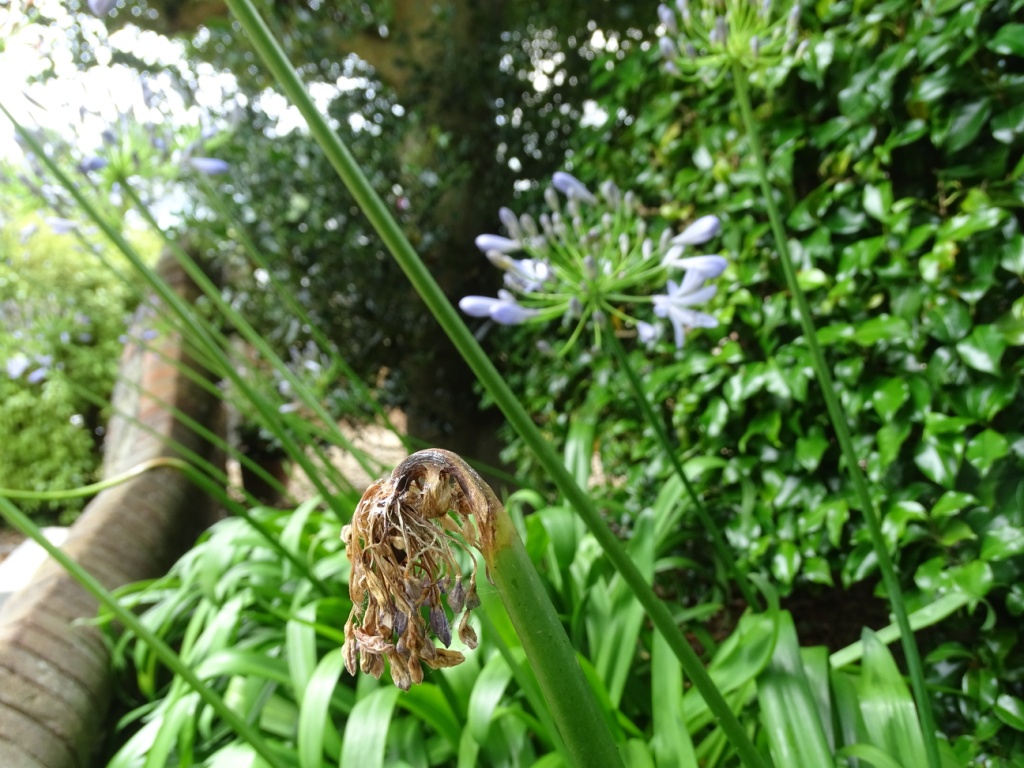The Hemerocallis gall mite is very much like that. You can recognise the bloated flower heads once you know what you are looking for. Worth inspecting them as their buds begin to develop.
I have shared pictures of our worst affected flowers, but as Hostafan has said you don't have to remove the flower heads that are o.k only the deformed or dead looking flowers (usually brown or misshaped.. As yet the RHS don't know the full story, but if you look on their site they will provide more information. If you think long term, then destroying a few flower heads is a small price to pay. I don't particularly like Agapanthus, but with a large garden, they are an attractive weed suppressant that pops up all over the garden without any encouragement.
I have just received a reply from the RHS letting me know that they believe we have the gall midge and that they are working on various remedies but at present to continue to be vigilant and remove and destroy (not compost) any affected flowers, which we had already done.
They believe that the affected flowers will not affect the health of the plant and that by destroying the flowers which have the gall midge we will be helping to prevent the midges from multiplying. I hope they are right.
Posts
you only need to remove the infected flowers ( not all will be ), thus breaking the breeding cycle. A price worth paying I'd say.
Thanks for that info.
The Hemerocallis gall mite is very much like that. You can recognise the bloated flower heads once you know what you are looking for. Worth inspecting them as their buds begin to develop.
'You must have some bread with it me duck!'
I have shared pictures of our worst affected flowers, but as Hostafan has said you don't have to remove the flower heads that are o.k only the deformed or dead looking flowers (usually brown or misshaped.. As yet the RHS don't know the full story, but if you look on their site they will provide more information. If you think long term, then destroying a few flower heads is a small price to pay. I don't particularly like Agapanthus, but with a large garden, they are an attractive weed suppressant that pops up all over the garden without any encouragement.

I have just received a reply from the RHS letting me know that they believe we have the gall midge and that they are working on various remedies but at present to continue to be vigilant and remove and destroy (not compost) any affected flowers, which we had already done.
They believe that the affected flowers will not affect the health of the plant and that by destroying the flowers which have the gall midge we will be helping to prevent the midges from multiplying. I hope they are right.